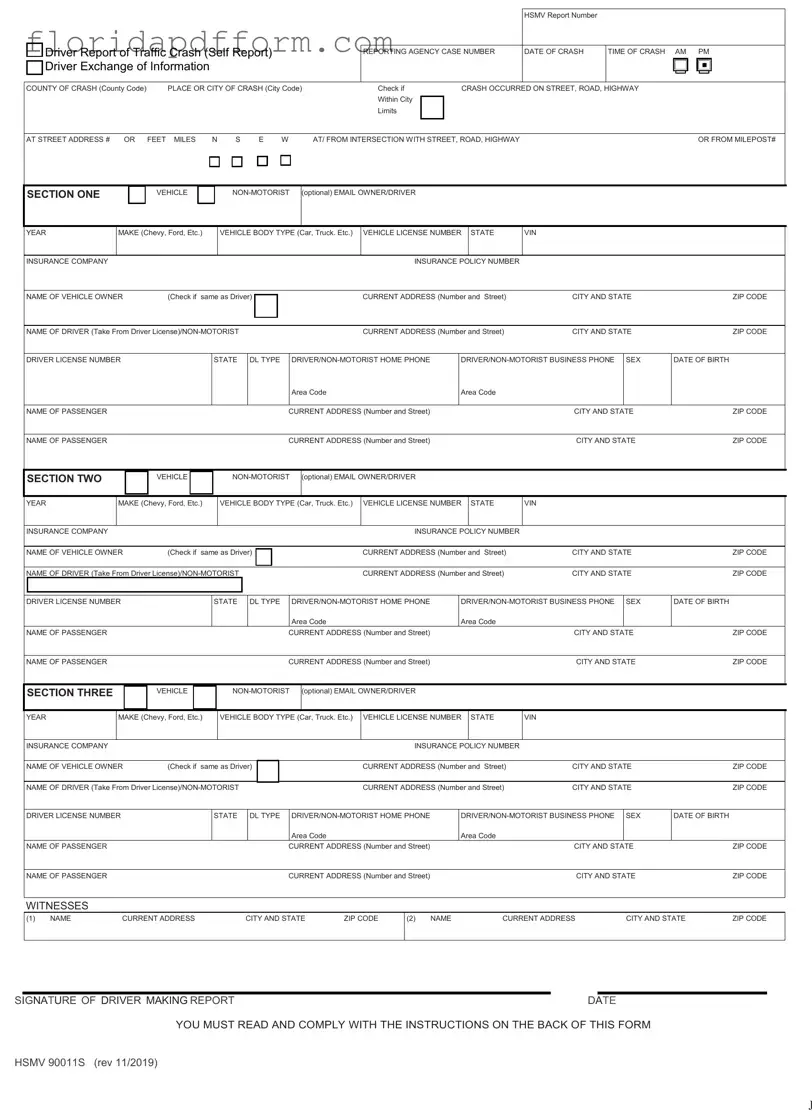How to Use Florida Traffic Crash Report
Completing the Florida Traffic Crash Report form is an important step after being involved in a traffic incident. This report helps to document the details of the crash and is required by law in certain circumstances. Follow these steps to accurately fill out the form.
- Start with the HSMV Report Number and Reporting Agency Case Number. Fill in the details as they apply to your situation.
- Enter the Date of Crash and Time of Crash. Make sure to specify AM or PM.
- Identify the County of Crash using the appropriate county code.
- Provide the Place or City of Crash using the city code.
- Check the box if the crash occurred on a street, road, or highway within city limits.
- Fill in the Street Address or the distance in feet/miles from the intersection.
- In Section One, provide details about the vehicle involved, including the Year, Make, Body Type, License Number, State, and VIN.
- Enter the Insurance Company and Insurance Policy Number.
- List the Name of Vehicle Owner and check if it is the same as the driver.
- Complete the Current Address of the vehicle owner, including City, State, and ZIP Code.
- Fill in the Name of Driver or non-motorist, along with their Current Address, Driver License Number, State, DL Type, Home Phone, Business Phone, Sex, and Date of Birth.
- Provide the names and addresses of any passengers in the vehicle.
- If there are additional vehicles, repeat the details in Section Two and Section Three as needed.
- List any witnesses, including their names and addresses.
- Sign the report at the bottom of the front page and date it.
Once you have completed the form, keep a copy for your records. You can submit the report via email or mail it to the designated address. Make sure to follow the submission instructions carefully to ensure your report is processed correctly.
